Olympia, Patras, Náfpaktos, and Delphi
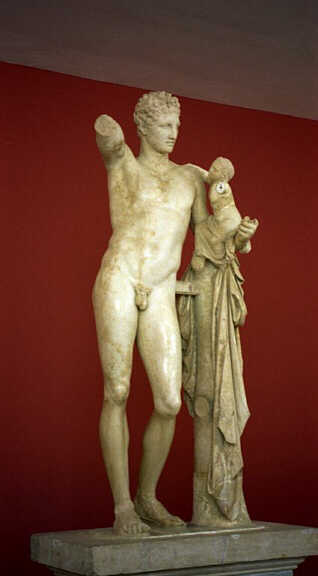 Olympia;
Statue of Hermes
Olympia;
Statue of Hermes
 Olympia;
Statue of Hermes
Olympia;
Statue of Hermes
Ancient Olympia was located on the western side of the peloponnese. In 776 BC, the Greeks held the first Olympic games in honor of the god Zeus. The games were held every four years and included many of the events we see in the modern Olympics: boxing, wrestling, long jump, discus, javelin throw, and running. Unlike the modern Olympics which was interrupted by W.W.I and W.W.II, the ancient Greeks kept their games going by allowing athletes to travel through hostile territory. The games went on until 394 AD until they were shut down by Roman Emperor Theodosius I. Unfortunately, much of Olympia was razed (and a 5th century AD earthquake didn't help either) but some of its great works such as the statue (circa 4th century BC) above were spared. The statue of Hermes holding an infant Dionysus was created by Praxiteles who was considered to be one the greatest sculptor of the ancient world. It is his only surviving work and the statue along with other ancient artifacts found at Olympia now reside in a nearby museum.
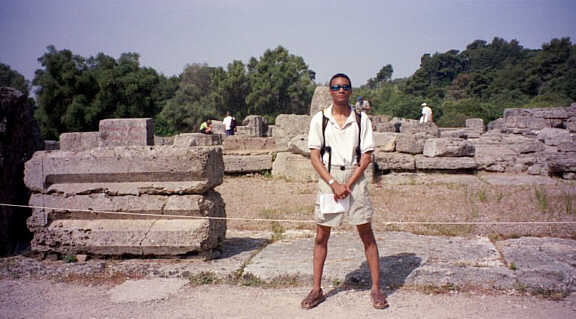
This hardly looks like the site of one of the world's Seven Ancient Wonders, but it is. The rubble behind me is the remains of the Doric Temple of Zeus which was built in the 5th century BC. Inside the temple was a huge statue (an Ancient Wonder) made of gold and ivory by Pheidias (who also designed the Parthenón -- what a guy!). The statue was said to have reached the ceiling of the temple and this would indicate that it was huge. Not surprisingly, there is nothing left of the statue today (tough to leave gold and ivory laying around for too long).
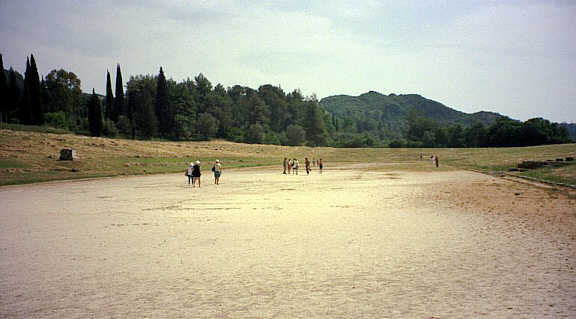
The outline of the track where the ancient Olympians performed their foot races can still be seen in this photo. The stadium was built in the 4th century BC and was able to hold 20,000 spectators. Near the stadium was a hippodrome where chariot races took place but today it is just a rough field.
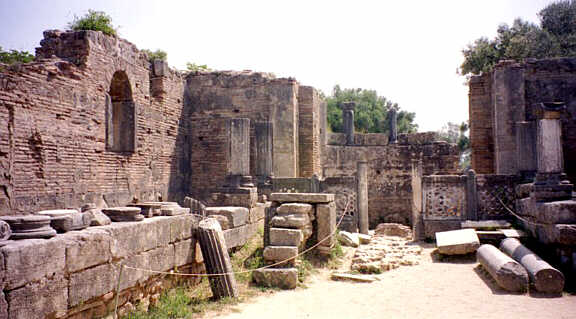
This is where the statue of Zeus was built. Archaeologists confirmed the site by find a cup with Pheidias' name on along with mold and tools consistent with making the statue. Most of the ruins seen in the photo are from a Byzantine church which was built over the ancient workshop.
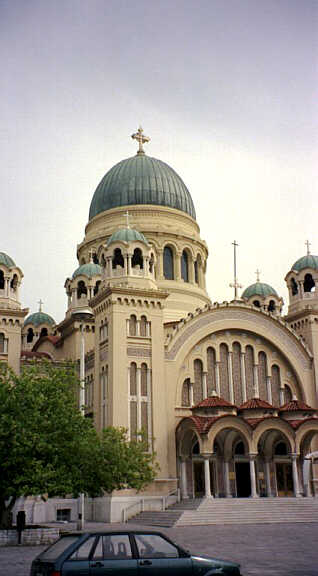
This is actually a very new cathedral (agios) and it wasn't completed until 1974. The cathedral commemorates the martyring of St. Andreas (George) in the year 68 AD. Patras is Greece's key port on the northern end of the peloponnese.
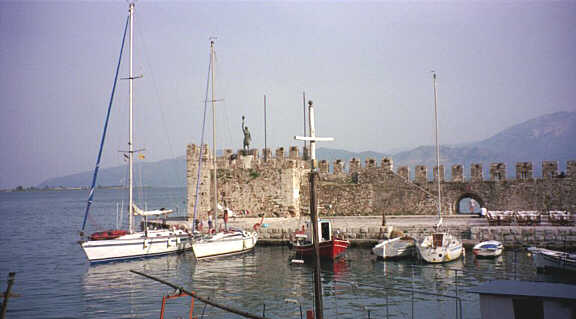
A quick ferry (20 minutes) from Patras puts you in the port city of Nafpaktos. This is a photo of the walled harbor which protected the port in medieval times. At that time, the port was known as Lepanto. In 1571, the naval Battle of Lepanto took place between an alliance of Christians and the Ottoman Turks. It was the last major battle fought with ships powered by oars and the Turkish fleets were annihilated.
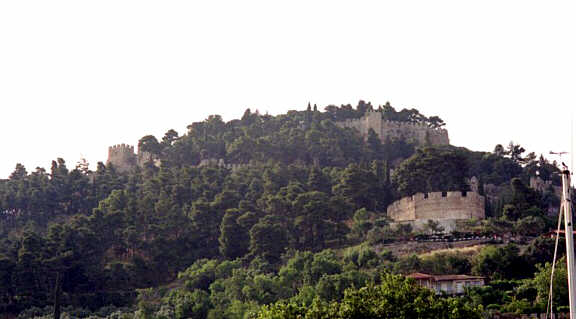
Náfpaktos' Fortress (in the photo) was built in the 15th century by the Venetians. The fortress guards the entrance to the Gulf of Corinth. The photo was taken from the harbor.
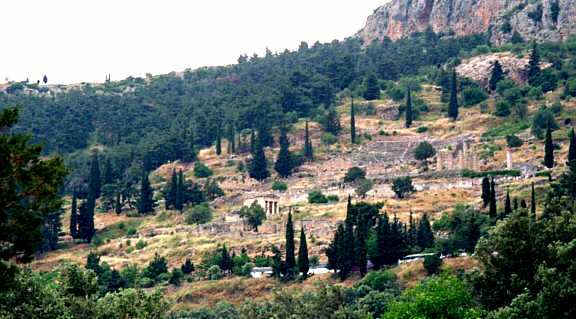
Just east of Náfpaktos near the lower slopes of Mt. Parnassus was the ruins of Delphi. Delphi (constructed after the 7th century BC) was considered by the ancient Greeks to be the center of the world and it housed the famous oracles which gave enigmatic prophecies. The strange oracular messages could be cleverly interpreted by wily politicians to suit their needs. For example, during the Persian Wars (5th century BC), the oracle at Delphi prophesied that "walls of wood will be built" to defend Greece. Themistocles interpreted the "walls of wood" to be battle ships which he directed to be built. The ships were subsequently used to defeat the Persians in the Battle of Salamis. The photo above shows a distance shot of Delphi. The little building in the center of the photo was the treasury. Further up and to the left you can make out the Temple of Apollo and at the top was a stadium.
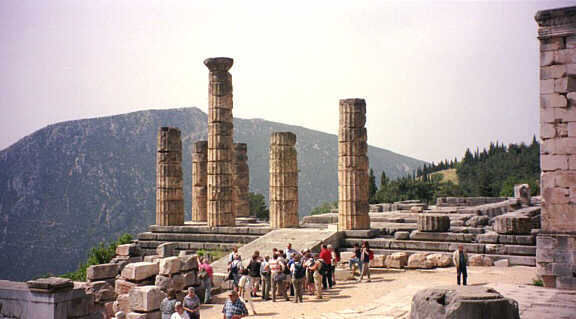
Apollo was the Greek god of prophecy and Delphi was dedicated to him. This photo (and the upper left of the photo below) shows what is left of his temple which was built late in the 6th century BC. The temple was the largest structure in Delphi and and the center of oracular activity. Delphi's tradition of providing prophecies to pilgrims (who first dropped a few coins at the treasury and sacrificed an animal) continued eight hundred years until the 2nd century AD.
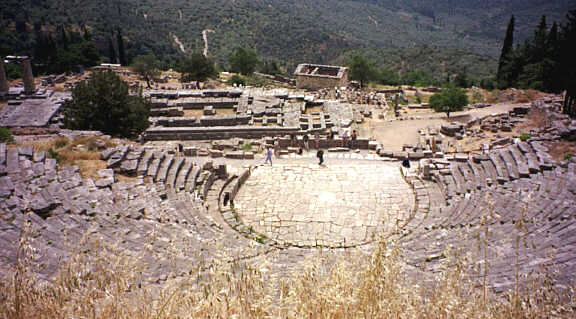
The theater of Delphi could seat 5,000 and dates from the 4th century BC. The theater was one of the most well preserved areas of Delphi and it offered the best overall view of the site along with the verdant valley below.
[Return to the Fiend's
Spring Vacation Page]
[Return to the Fiend's
SuperBear Page]